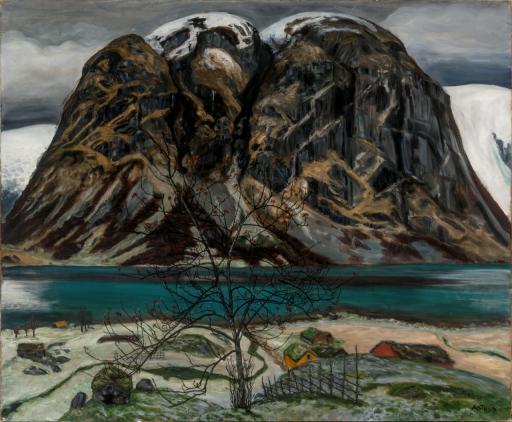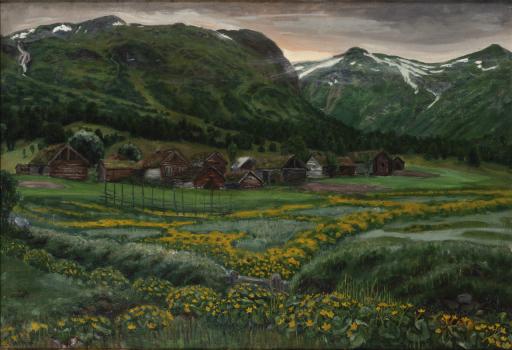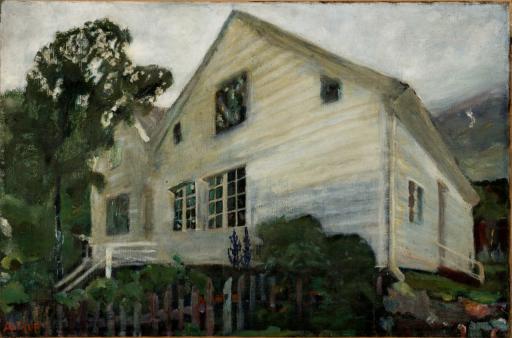The exhibition “Norwegian Art” in the venues of Künstlerbund Hagen (established in 1900) in Vienna was curated by the then Norwegian museum director Jens Thiis. The exhibition was made up of 235 artworks by 41 artists, in addition to a selection of graphic prints by Edvard Munch. In a letter to the editor in Morgenbladet Thiis describes the strong reactions the exhibition received in Vienna. The Norwegian art was considered highly modern, and would have a lasting effect on Vienna’s art world, according to the director of Staatsgalerie im Belvedere, Friedrich Dörnhöffer.
However, the exhibition provoked debate. Neue Freie Presse presented a conservative view, saying that the exhibition of “a miscellany of things” was incomprehensible. Wiener Allgemeine Zeitung, on the other hand, claimed that the Norwegian art had to be understood as a “dynamic Summation of a characteristic Moment in the development of a national art”. The critic nevertheless also put the distinctive national characteristic aside: the style of painting should be viewed as a trend – “the strange likeness” – in the development of European art. This style sprung out of the art of Paul Cézanne, Vincent van Gogh and Paul Gauguin, but developed freely and in a characteristic manner in Norwegian art.
In Der Morgen Fredrich Pollack writes the following about Astrup: “Astrup, a Kind of Japanese version of Jan Peissler, who is preoccupied with emphasizing the Mood of the harsh Nordic Landscapes, his ghostly ‘Mountain’ (Kollen, K53) should be mentioned in particular.”
References
Künstlerbund Hagen. Norwegische Künstler. Wien: Hagenbund, 1912.




